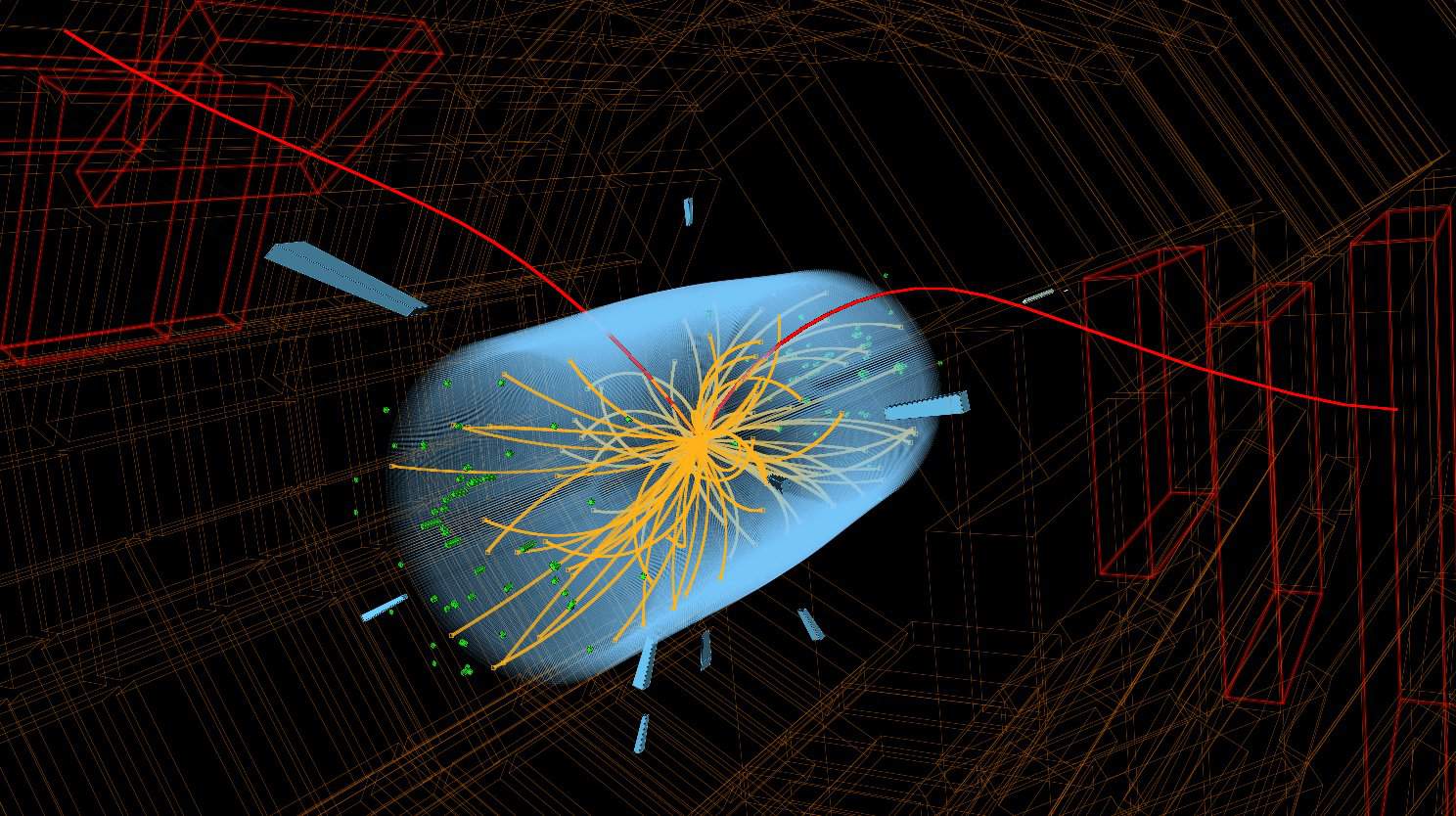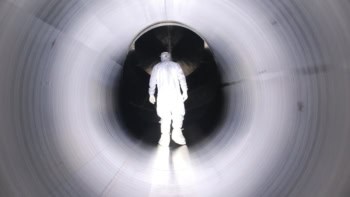
By Hamish Johnston
It’s a story with a hint of both “man bites dog” and “dog bites man” about it.
Physicists working on the CMS and LHCb experiments at CERN have independently seen an incredibly rare decay of a particle – a strange B meson decaying into two muons. The odds of this meson decaying in this particular way is about one in a billion, making the joint discovery a triumph of experimental particle physics. And it is officially a discovery. That’s because when data from the two experiments are combined the observation has a statistical significance of greater than 5σ, which is the gold standard in particle physics.
So much for “man bites dog” – the “dog bites man” aspect of this discovery is that the decay occurs just as predicted by the Standard Model (SM) of particle physics. Some physicists had been hoping that its discovery could point to physics beyond the SM, perhaps offering up tantalizing clues of supersymmetry for example.
The combined LHCb and CMS results are presented in this report published by both experiments.
Continuing with trite analogies, if you are a “glass half empty” type of person you might see this as more evidence that the LHC is failing in one of its key missions: to find physics beyond the SM. I prefer the “glass half full” option and look forward to the LHC restarting at 13 TeV, when it might just push the SM to the breaking point.
In the meantime, blogger Tommaso Dorigo has written an intriguing post about another rare B meson decay that could point beyond the SM. It seems that certain aspects of the decay as measured by LHCb don’t agree with the SM – and the certainty of these observations could be as high as 3.7σ. The glass is slowly filling!



